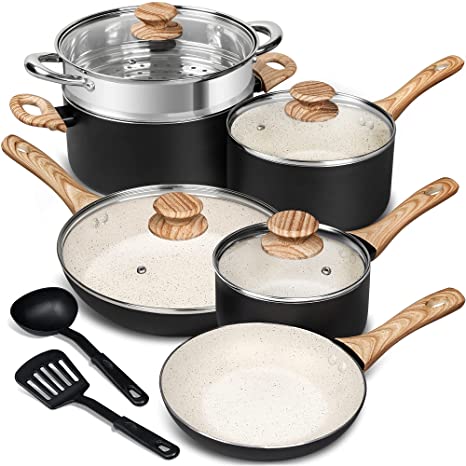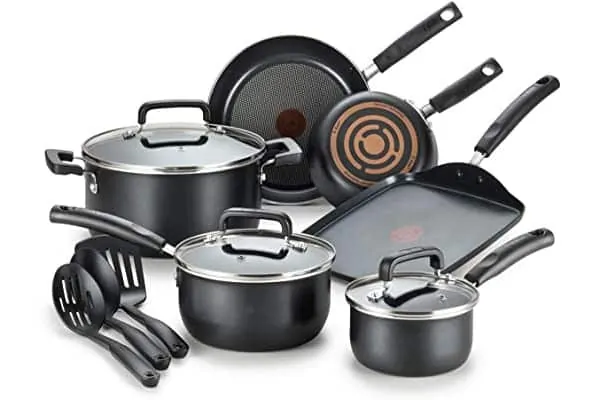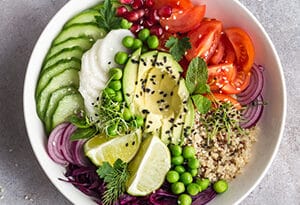What Kind of Utensils are Ideal for Cooking?
Whenever you cook for your loved ones, you make sure that you choose the best possible ingredients, cooking medium, vegetables, spices and everything that would make food more nutritious and yummy. However, how often do we pay heed to the utensils that we cook in? If cooking is an art, then using the right utensils and cooking food for accurate time is the science that makes it a wholesome experience. While we may be buying fancy looking cookware or the convenient non-stick ones, the truth is, most modern utensils are dangerous as they emit toxic, cancer causing fumes. Traditionally, clay pots, iron, brass and bronze utensils were used for cooking food. These not just preserved the nutrition of food but also added taste to it. But our busy lives have replaced them with modern quick-fixes that are serious health hazard and should be thrown away immediately.
There are many different types of cookware and they are produced in different quality. It is very important to know the properties and composition of the cooking utensils you use. You should also know that the use of bad utensils can be harmful to health and destroy the taste of food. Many different types of utensils are available in the market today like aluminum, steel, copper and bronze. This article will help you in understanding the benefits and effects of using them.
1. Stainless Steel
One of the most readily available and best vessels for cooking that you should consider is stainless steel. They are easy to use, low on maintenance and highly durable.You can not only cook wide varieties of dishes in it, but it also retains approximately 60 to 70 per cent nutrient content of the food. However, refrain from buying the stainless steel utensil that is polished with chromium or nickel as they may cause health threats.
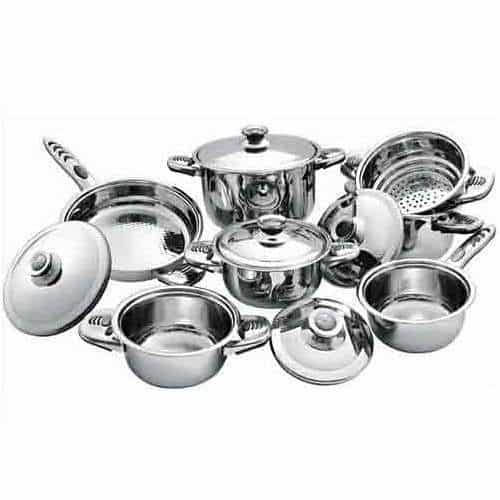
Steel itself is a poor conductor of heat, so aluminum or copper is most often added to steel vessels. In fact, this is their main advantage, as these metals are used for the double bottom that this type of vessel has.With these extra layers, the dish does not burn and the dish retains heat for a long time. Choose dishes with thicker bottoms and walls – they will reward you with long years of service.
Pros of Stainless Steel Utensils
This type of cookware is also called nonreactive and can be used to cook all kinds of food.
The basic models and standard shapes of these vessels are also relatively low cost!
Cons of Stainless Steel Utensils
Steel cookware has difficult and slow heat transfer and distribution.
This problem with these vessels can be solved by purchasing higher quality stainless steel vessels with an added inner core made of copper or aluminum, which improves thermal conductivity.
The good thing is that these additions do not increase the price much while they improve the utensils’ cooking capabilities!
2. Cast Iron
One of the long-lasting and sturdy metals that can be used for cooking food is cast iron. The thickness of iron makes it easy to retain all the nutrients; however, cooking in rusted cookware is purely dangerous for the body. If you can learn how to maintain your iron kadhai, it is best to cook your veggies in it.
Small amounts of iron reach our body from the cookware when you cook food in a utensil made of cast iron, however, that is healthy for us. But if you are battling with an overload of iron in the body, avoid cooking food in such utensils. The modern-day cast iron utensils come with a safe coating to reduce leaching of iron; such utensils are more durable and easy to care too.

Today, on the market, there are those with metal-ceramic or non-stick coating, making these dishes universal. In taste, food cooked in cast iron containers is close to that in clay ones. The cast iron vessel is not distorted and is practically eternal. However, the weight and labor intensity of its washing is something to keep in mind.
Pros of Cast Iron Utensils
Cast iron is a relatively inexpensive material, naturally non-stick, if in the right proportions, distributes heat evenly and retains it for a long time, gives iron in food, which for some recipes is useful.
They are very useful for prolonged cooking.
Cons of Cast Iron Utensils
Cast iron cookware is quite heavy and difficult to work with. When heated, it takes a long time to reach the required operating temperature, and cleaning them requires a little more effort.
There is a good solution for these vessels as well.
Externally-coated cast iron cookware suitable for all hobs and ovens is produced. These utensils are easy to clean and have all the advantages of raw cast iron cookware and no disadvantages.
3. Glass
Undoubtedly one of the safest kitchen utensils that you can use for cooking is glassware. Glass is a non-reactive material, which means it neither release harmful elements into the food being cooked nor does it absorbs any nutrition from the food. The only limitation that is associated with it is that it is mostly used for microwave cooking.
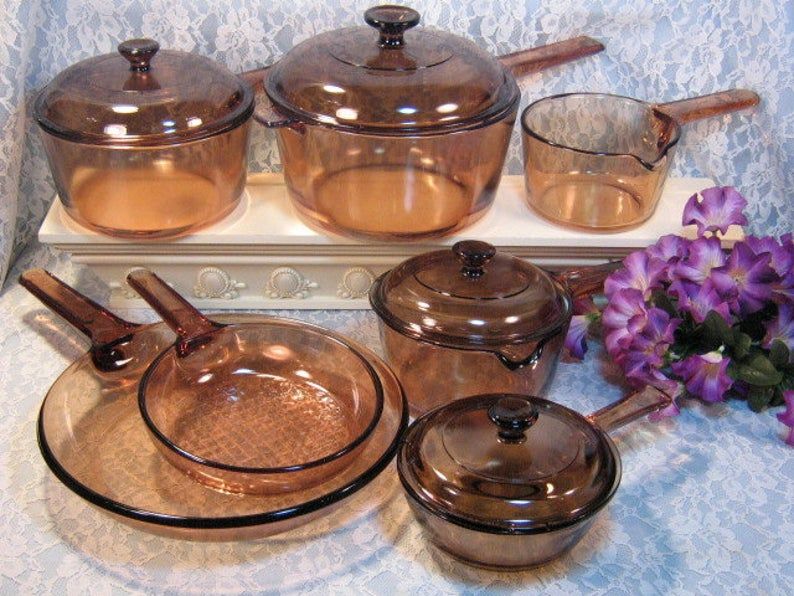
Certified as ‘safest’ cookware, glass utensils are generally used for microwave cooking. Their non-reactive nature makes them healthy for cooking. They neither release elements into the food nor absorb anything from them and thus, result in nutrients-rich final dishes.
4. Brass
Brass is a great material when it comes to cooking food because the food prepared in such utensils retain as much as 90 per cent of its nutritional content. Brass utensils are great for preserving the optimum way to keep most nutrients intact in the food that is being cooked. The only drawback or downside of using such utensils is cleaning them because extra care needs to be put in when you wash such utensils.
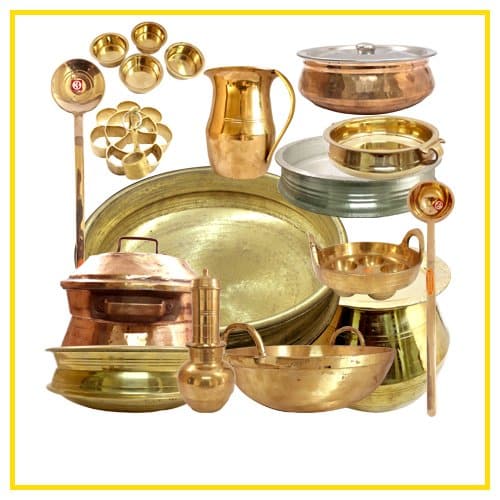
It has been proved that cooking veggies and meat in brass utensil is the best way to gain all nutrients. According to food experts, cooking in brass retains 93 percent nutrients, on the contrary aluminium retains just 13 percent. The only downside of this utensil is that it requires extra care while washing. Also, you must avoid cooking too much acidic food.
5. Bronze
Bronze is another very healthy medium of cooking food but this material tends to keep approximately 97 percent of the nutritional quotient of the food intact. However, be aware of any tin or nickel that may be added to these utensils as it may lead to health hazards. Buying for a known or reliable source is a better way of buying some authentic bronze utensils.
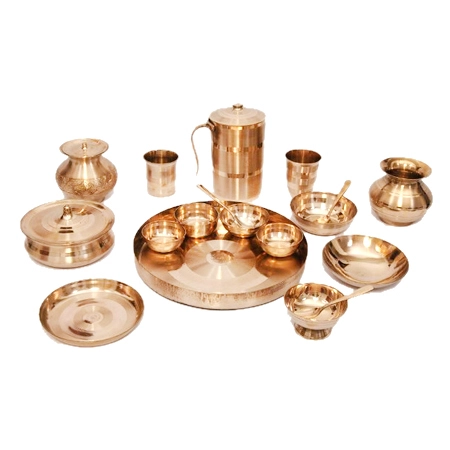
In early times, it was used by the royal families to cook and eat and it retains nearly 97 percent nutrients. With the change in time, new-age restaurants and cafes have started serving food in bronze utensils.
6. Clay Pots
Made totally with natural ingredients, using natural method (fire), this variety of utensil is considered the most ideal one for healthy cooking. Clay heats up slowly and thus helps in retaining moisture and nutrients of the food intact. The biggest drawback associated with clay pots is that it takes longer to cook in comparison to other materials. Also, make sure that you buy unglazed pots rather than picking up the glazed ones because the latter may use harmful chemicals that may release during the process of cooking.
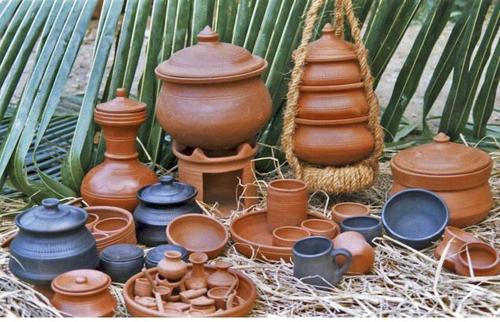
The only drawback with clay pot cooking is it takes double time to cook food as compared to other mediums.
Cookware You Should Avoid for Cooking Purposes
Now that you know about the cookware that is good for you, let us tell you about those that you need to throw away right now because they are only doing harm to your body. The below-mentioned cookware use harmful chemicals and when heated, they get mixed with food making it partially toxic. Have a look and act accordingly.
Where cooking in some kinds of utensils helps in adding extra health benefits, on the other hand, there are some materials that may pose health threats if you cook food in them. Following are some cookware materials that you should avoid cooking food in:
1. Ceramic
There is no doubt that when it comes to stir-frying or sauteing food, ceramic cookware is a great option. However, the sad part is that most cookware with ceramic coating has a very thin coating and underneath there may be a coating of aluminium that may pose serious health hazards is used for cooking food. If you have to use ceramic cookware, make sure you buy one with heavy ceramic coating and from a renowned store or brand.
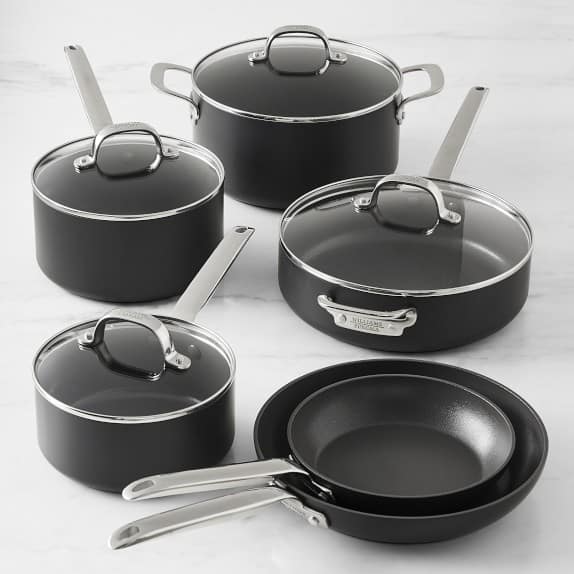
2. Aluminium
There was a time when almost Indian households were flooded mostly aluminium utensils in their kitchen cabinets. Commercially viable and easily available aluminium cookware is made of thyro-toxic metal that is known to cause many health hazards. With time, they leach into the food and can cause constipation, paralysis, liver damage and even serious brain disorder.
Aluminum cookware is a favorite in cookware because it heats up quickly, does not burn and the price is not typically very high. Unfortunately, they do deform relatively easily. If possible, avoid using aluminum utensils for acidic or salt-containing products and after cooking in them, transfer the food to a glass or porcelain dish.
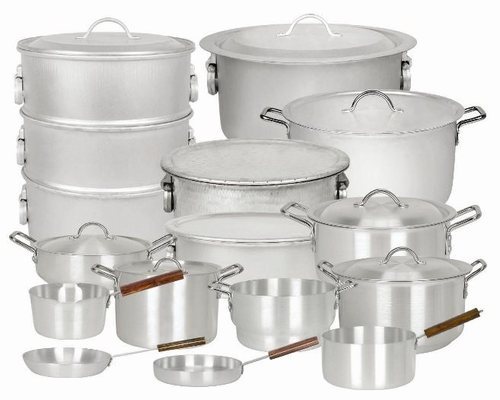
Pros of Aluminum Utensils
Aluminum cookware has very good thermal conductivity and is extremely light and easy to use. Very common and indispensable when preparing someone according to specific recipes.
Cons of Aluminum Utensils
Like copper, aluminum is highly reactive with alkaline or acidic foods. It is extremely soft and easily deformed by a slight mechanical impact or when cooking at a very high temperature.
Aluminum utensils are easily scratched, which is a problem with prolonged cooking for health.
New technologies have improved this cookware through an electrochemical process, resulting in anodized aluminum, which is much harder and thus solves most of the problems of cookware.
3. Granite
Granite utensils can pose some serious health conditions too because they are coated with a harmful substance called tetra fluoro ethylene. The reality is that such cookware is not exactly made up of granite but just look like it, in either case, it is not healthy for cooking.
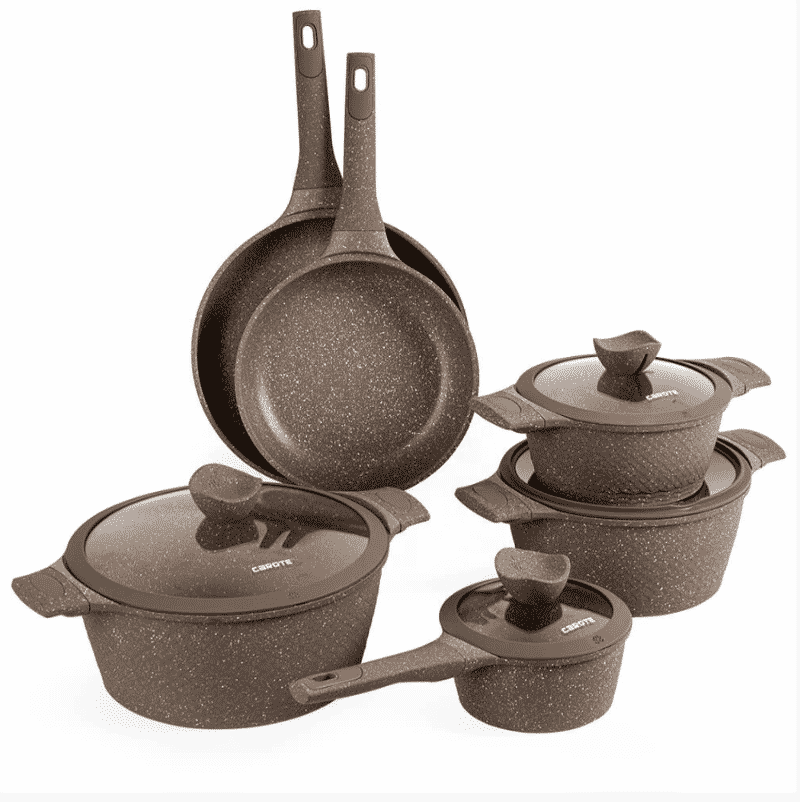
In case you think that granite cookware is safer than non-stick, you need to know that they are also coated with poly tetra fluoro ethylene and are equally bad for you. They are NOT made of granite but look like it.
4. Non-Stick Cookware
Over 90 percent urban Indian households use non-stick cookware, as they are light in weight, non-messy and easy to use. However, these kinds of cookware are coated with Teflon or tetrafluoroethylene that contains material like cadmium and mercury that can pose health threats like various kinds of cancer, heart diseases etc. Slowly and gradually these elements store up in the body and cause mental and nerve disorders too.
